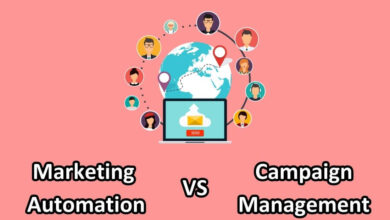Are you struggling to harness the power of data visualization tools? Look no further! In this comprehensive guide, I’ll unravel the intricate differences between two of the leading business intelligence platforms: Power BI and QlikView.
Throughout this article, we promise to shed light on every aspect, ensuring you gain a thorough understanding of the disparities between Power BI and QlikView.
Power BI and QlikView are both renowned for their prowess in transforming raw data into actionable insights. While Power BI is a Microsoft product known for its user-friendly interface and robust integration capabilities, QlikView stands out for its associative data model and powerful data discovery features.
Power BI vs. QlikView (Comparison Chart)
| Factors | Power BI | QlikView |
|---|---|---|
| What are They? | Power BI is a business analytics tool developed by Microsoft. It enables users to visualize and analyze data through interactive dashboards and reports, facilitating data-driven decision-making. | QlikView is a business intelligence (BI) and data visualization tool developed by Qlik. It allows users to create and share interactive dashboards and reports from various data sources, enabling insights and analysis for organizations. |
| Data Modeling Approach | Power BI follows a traditional, model-driven approach. Users define relationships beforehand, providing structure to the data. | QlikView, on the other hand, employs an associative data model, enabling dynamic data exploration. |
| User Interface and Visualization | Power BI boasts a modern and intuitive user interface, with a wide range of customizable visualizations and interactive features. | QlikView's user interface may appear more traditional compared to Power BI, but its associative data model facilitates highly interactive and dynamic visualizations, offering unique insights. |
| Deployment and Scalability | It is a cloud-based platform with robust scalability, suitable for organizations of all sizes. | It traditionally offers on-premises deployment, providing greater control over data governance and security. |
| Cost and Licensing | Power BI offers flexible pricing options including a free version, making it accessible to organizations. | QlickView’s licensing fees tend to be higher, especially for enterprise deployments, yet scalability and features may justify the investment over time. |
What is Power BI?
Power BI is a business analytics solution by Microsoft that enables users to visualize and share insights from their data. It empowers organizations to connect to a wide range of data sources, create interactive reports and dashboards, and gain valuable insights through data exploration and analysis.
Key Features and Capabilities
- Seamless Integration: Power BI seamlessly integrates with various Microsoft products such as Excel, Azure, and Dynamics 365, facilitating smooth data migration and analysis.
- Interactive Visualizations: Users can create compelling visualizations using Power BI’s extensive library of charts, graphs, and maps, making data interpretation intuitive and insightful.
- Advanced Analytics: With features like predictive analytics and AI-powered insights, Power BI enables users to uncover hidden patterns and trends in their data, driving informed decision-making.
What is QlikView
QlikView is a business intelligence and data visualization platform renowned for its associative data model, which allows users to explore data dynamically and make discoveries without predefined queries. It empowers businesses to gain actionable insights from vast and complex datasets.
Key Features and Capabilities
- Associative Data Model: QlikView’s unique associative model enables users to navigate data relationships effortlessly, making data exploration and analysis more intuitive and efficient.
- In-Memory Processing: By storing data in memory, QlikView accelerates data processing and query performance, enabling users to analyze large datasets in the real-time.
- Self-Service Visualization: QlikView offers a user-friendly interface for creating personalized dashboards and reports, empowering users to visualize data according to their specific needs and preferences.
Pros and Cons of Power BI and QlikView
Pros and Cons of Power BI
Pros:
- User-Friendly Interface: Power BI’s intuitive interface makes it easy for users to create and customize reports and dashboards without extensive training.
- Wide Integration: It seamlessly integrates with Microsoft’s ecosystem, enabling users to leverage existing tools and technologies.
- Robust Community Support: Power BI boasts a thriving community of users and developers, offering a wealth of resources and support for troubleshooting and innovation.
Cons:
- Limited Data Modeling: Power BI’s data modeling capabilities are not as advanced as some other BI tools, limiting its suitability for complex data analysis.
- Dependency on Microsoft Ecosystem: While integration with Microsoft products is a strength, it also means that organizations heavily invested in other ecosystems may face compatibility issues.
- Cost: While Power BI offers a free version, advanced features and capabilities come with a subscription fee, which can be prohibitive for small businesses or startups.
Pros and Cons of QlikView
Pros:
- Associative Data Model: QlikView’s associative model allows for flexible data exploration and analysis, empowering users to uncover insights that traditional query-based approaches may miss.
- In-Memory Processing: By storing data in memory, QlikView delivers exceptional performance and responsiveness, even when dealing with large datasets.
- Enterprise Scalability: QlikView is well-suited for enterprise deployment, offering robust security, governance, and scalability features.
Cons:
- Steep Learning Curve: QlikView’s unique approach to data visualization and analysis may require significant training and expertise, particularly for users accustomed to traditional BI tools.
- Limited Native Connectivity: While QlikView supports various data sources, its native connectivity options may be limited compared to other BI platforms.
- Cost: QlikView’s licensing fees and deployment costs can be substantial, particularly for smaller organizations or those with limited budgets.
Key Differences Between Power BI and QlikView
When comparing Power BI and QlikView, it’s crucial to understand the key differences that set them apart. Here are five significant distinctions:
Data Modeling Approach
- Power BI: Power BI follows a traditional, model-driven approach to data modeling, where users define relationships between datasets beforehand.
- QlikView: QlikView employs an associative data model, allowing for dynamic data exploration without predefined relationships. Users can navigate data associations freely, enabling more flexible analysis.
User Interface and Visualization
- Power BI: Power BI boasts a modern and intuitive user interface, with a wide range of customizable visualizations and interactive features.
- QlikView: QlikView’s user interface may appear more traditional compared to Power BI, but its associative data model facilitates highly interactive and dynamic visualizations, offering unique insights.
Deployment and Scalability
- Power BI: Power BI is a cloud-based platform with robust scalability, making it suitable for organizations of all sizes. It offers seamless integration with other Microsoft products and services.
- QlikView: QlikView traditionally offers on-premises deployment options, providing organizations with greater control over data governance and security. However, this may require more extensive IT infrastructure and resources for scaling.
Learning Curve and Ease of Use
- Power BI: Power BI is renowned for its user-friendly interface and shallow learning curve, making it accessible to users with varying levels of technical expertise.
- QlikView: QlikView’s unique associative model may present a steeper learning curve for users accustomed to traditional BI tools. However, once mastered, it offers unparalleled flexibility and insights.
Cost and Licensing
- Power BI: Power BI offers a range of pricing options, including a free version with limited features and subscription-based plans for advanced capabilities. It may be more cost-effective for organizations already invested in the Microsoft ecosystem.
- QlikView: QlikView’s licensing fees tend to be higher, especially for enterprise deployments. While it may entail a higher upfront cost, organizations may find its scalability and features justify the investment over time.
Conclusion: Choosing the Right Tool
When deciding between Power BI and QlikView, several factors come into play. Consider your organization’s specific needs, such as data complexity, scalability requirements, and existing infrastructure.
Evaluate the technical expertise of your team and their comfort level with different data modeling approaches. Additionally, factor in budgetary constraints and long-term scalability considerations.
Use Cases and Scenarios Where Each Tool Excels:
- Power BI: Power BI excels in organizations heavily invested in the Microsoft ecosystem, offering seamless integration with other Microsoft products and services. It’s ideal for businesses seeking a user-friendly BI solution with robust visualization capabilities and advanced analytics features.
- QlikView: QlikView shines in environments where data exploration and discovery are paramount. Its associative data model enables users to uncover insights not possible with traditional BI tools, making it suitable for industries with complex and dynamic data relationships, such as finance and healthcare.
Final Thoughts on the Differences and Similarities Between Power BI and QlikView
While Power BI and QlikView have distinct strengths and weaknesses, both platforms empower organizations to harness the power of data for informed decision-making.
Whether you prioritize ease of use, scalability, or advanced analytics capabilities, choosing the right tool ultimately depends on your unique business requirements and strategic objectives.
Take the time to evaluate each platform’s features, consider pilot projects or demonstrations, and involve key stakeholders in the decision-making process to ensure you select the BI solution that best aligns with your organization’s goals.



